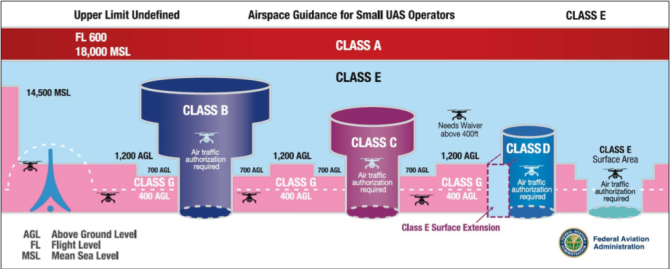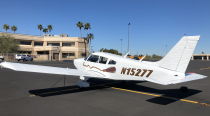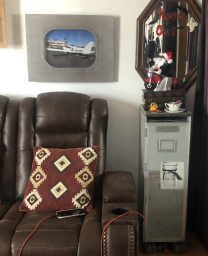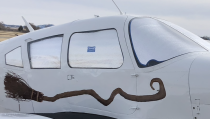
Adobe Acrobat document [737.5 KB]
Adobe Acrobat document [97.0 KB]
Adobe Acrobat document [145.1 KB]
Adobe Acrobat document [77.6 KB]
Adobe Acrobat document [60.4 KB]
Adobe Acrobat document [43.7 KB]
Adobe Acrobat document [50.7 KB]
Adobe Acrobat document [33.3 KB]
Adobe Acrobat document [67.8 KB]
Adobe Acrobat document [25.9 KB]
Adobe Acrobat document [35.1 KB]
Checklist
Set up an account with FAADroneZone
Navigate to the Part 107 Waivers & Authorizations section, and click the button that says, Create Part 107 Waiver/Authorization.
Select Airspace Authorization
Select Operation Title – you need a primary title for your intended operation. Be clear and specific, so something like: Ongoing Residential Roof Inspections in BNA Class C Airspace
Select Responsible Party – the Responsible Party is not required to hold a Remote Pilot Certificate and can be the representative of an organization.
The Responsible Party you put down is accountable for a list of responsibilities, which include maintaining records demonstrating compliance with FAA requirements; being accessible by the ATC; and maintaining a list of pilots and make / model of all aircraft involved in the operation. See the full list of responsibilities on pages 1 and 2 of FAA Waiver Application Instructions
Select Operation Parameters - Pay attention to all the form field instructions, like Dates cannot be in the past or exceed 24 months from today’s date.
When it comes to your Proposed Location of Operation, the more specific you can be here, the better. Provide city, state, and specific identifying characteristics, including landmarks.
Here is an example:
Project center point is intersection of ______________. Nearest street address is ______________. We intend to fly over the ______________ to capture photos and video for construction progress monitoring of the road/rail separation project. Flight will focus on bridge construction near this project center point as well as the railroad tracks affected by this project.
Use the Latitude and Longitude fields to identify the center point of your mission. The center point does not necessarily have to be where you are starting your mission, since factors such as weather and terrain may make starting in the center of your proposed area of operation impractical.
If you need help converting latitude and longitude decimal measurements for a particular location to the degrees, minutes, and seconds format needed in this application, you can use a conversion tool
Best practice is to use the center of the airport as the GPS location and to request Blanket Area / Wide Area authorization for that airport’s entire controlled airspace. This is the clearest way to request the most amount of airspace around an airport possible.
Description of Your Proposed Operation - it is important to note that the instructions for this open form field ask not just for a description, but also for “Purpose of operation and method by which the proposed operation can be safely conducted.”
Although FAA instructions for filling out the form state that this justification is only required for airspace waivers, and not airspace authorization, your best bet is to provide a clear safety justification for an airspace authorization request as well.
Here is an example of a successful application:
I intend to obtain site photographs/video of the construction progression at this location which was designed by COMPANY. The sUAS described within will be configured to limit vertical AGL altitude to 200ft and horizontal travel will remain within VLOS. We intend to utilize multiple launch points at this location to ensure the sUAS remains within VLOS. Aside from requesting to fly within this Class C airspace, we will comply with all other Part 107 regulations. In addition to complying with part 107, we intend to have a 2 man crew comprised of both a PIC & a designated VO to alert the PIC of any potential aircraft entering the vicinity. ATC can reach either of us if needed via our cell number provided in this request. PIC will also post a NOTAM via www.1800wxbrief.com, a minimum of 24-hour advance notice of this flight to inform pilots and ATC of specifics of the flight which will appear on sectional VFRs for any interested parties. We feel this request will benefit our project by allowing us the freedom to operate safely and as needed in this Class C airspace.
Here is an example of a Class D airspace authorization.
Proposed area of operations:
We request that we are able to fly in the Class D airspace around Sioux Gateway Airport (SUX), Sioux City, Iowa.
The airport coordinates are:
42-24-09.4000N / 096-23-03.7000W
42-24.156667N / 096-23.061667W
42.4026111 / -96.3843611
(estimated)
We intend to capture photos and video for clients who have property within the Class D airspace and have requested that we provide photos and videos of their property for various purposes such as marketing, construction and/or inspection. We agree that no flights will take place within 1 mile of the airport coordinates.
Description of your proposed operation:
We intend to obtain site photographs/video of various locations as requested by our clients during the upcoming summer months where our local weather permits the safe operation of our sUAS. The sUAS described within will be configured to limit vertical AGL altitude to 200ft and horizontal travel will remain within VLOS. We will ensure the sUAS remains within VLOS. Aside from requesting to fly within this Class D airspace, we will comply with all other Part 107 regulations. In addition to complying with part 107, we intend to have a 2 person crew comprised of both a PIC & a designated VO to alert the PIC of any potential aircraft entering the vicinity. We will give way to all aircraft and will be especially aware of our distance from runway approaches. ATC can reach us if needed via our cell number provided in this request. PIC will also provide a minimum of 24-hour advance notice of this flight to ATC of specifics of the flight: location, anticipated take-off time, anticipated end of operation, and current cell phone numbers of PIC and VO. PIC will also provide notice at the actual time of launch and landing of each flight to ATC if they so desire. We feel this request will benefit our project by allowing us the freedom to operate safely and as needed in this Class D airspace. The majority of the flights we anticipate will fall near the outer limits of the airspace.
After filling out this section of the application, review and then to submit your information to the FAA.
Contact Me
Sarah Nilsson, J.D., Ph.D., MAS
602 561 8665
You can also fill out my
Get Social with Me
Legal Disclaimer
The information on this website is for EDUCATIONAL purposes only and DOES NOT constitute legal advice.
While the author of this website is an attorney, she is not YOUR attorney, nor are you her client, until you enter into a written agreement with Nilsson Law, PLLC to provide legal services.
In no event shall Sarah Nilsson be liable for any special, indirect, or consequential damages relating to this material, for any use of this website, or for any other hyperlinked website.
Steward of
I endorse the following products
KENNON (sun shields)









